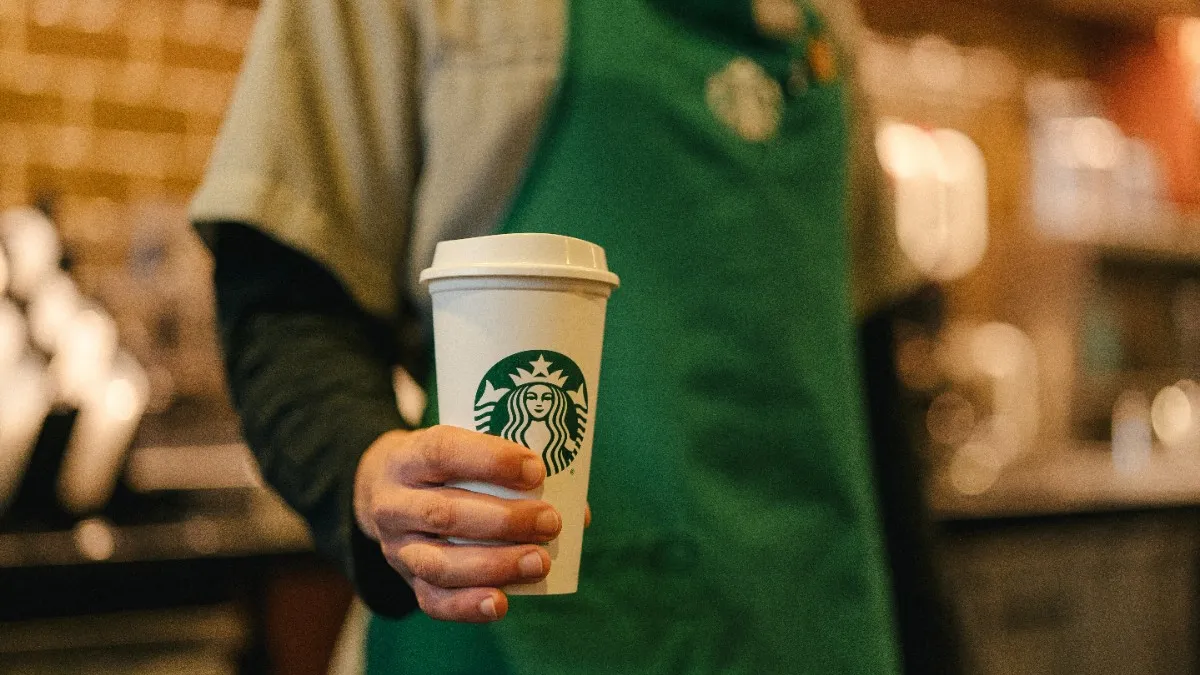Dive Brief:
- Starbucks raised its annual revenue forecast Tuesday on the prediction that diner traffic will rise as more people get vaccinated, raising its projections to $28.5 billion to $29.3 billion from $28 billion to $29 billion. But its Q2 2021 performance fell short of sales estimates, causing shares to slip 2%.
- U.S. same-store sales increased 9%, exceeding Starbucks estimate of 7.5% growth. Transactions were down 10%, but the chain reported ticket prices rose 22%. Fifty-two percent of U.S. company-operated sales for the period were driven by Starbucks Rewards members, which now stand at 23 million — an 18% uptick from the year-ago period, CEO Kevin Johnson said on a call with investors.
- Johnson said the success of the chain's digital channel is being driven by artificial intelligence's increasing role in operations. The chain's Deep Brew AI engine personalizes offers Starbucks makes to diners and now automates daily inventory orders across hundreds of U.S. stores as it is deployed more broadly.
Dive Insight:
Starbucks investment in its mobile app and loyalty program seem to be deepening diner engagement with ticket prices rising and mobile orders representing 26% of U.S. company-operated transactions for the period, rising 18% compared to the year-ago-period, Johnson said on the call.
As American consumers look to spend their stimulus checks and engage with restaurants thanks to widespread vaccinations, transaction frequency could also improve. But growth in at-home coffee consumption, driven by pandemic conditions, could be an obstacle. Starbucks' CPG partner Nestlé reported last week that at-home coffee sales fueled its best quarterly sales growth in nearly 10 years. Johnson also shared that in the U.S., Starbucks' share of total packaged coffee outpaced the category, growing over 8% in sales for the period.
Starbucks' confidence in American diners returning more frequently is backed by research, however. The chain is using its Deep Brew AI technology to "look at the vaccination progress of every country around the world and use predictive analytics to give us a view and correlation to how that's going to pace the recovery," Johnson said on the call.
Other diner behaviors exacerbated by the COVID-19 crisis could help this recovery as well. Starbucks is catering to diner interest in convenient, contactless restaurant experiences by increasing the throughput of its drive-thrus with new operational standards, handheld ordering devices and more efficient kitchen equipment. Out-the-window sales represented more than 50% of net sales for the quarter, rising more than 10% from pre-pandemic levels, Johnson said. He attributes this uptick to reduced wait times at the drive-thru thanks to the chain's optimization investments. Starbucks also closed 300 locations in the U.S. and Canada during Q2 as part of Starbucks' shift toward developing more off-premise oriented stores.
Though Starbucks' U.S. recovery is encouraging, there could be turbulence in its international business. Ninety-one percent same-store sales growth in China, Starbucks' fastest-growing market, came below expectations of 97% growth. Starbucks blamed this performance on area COVID-19 travel restrictions, but it's also possible the chain is being undercut by local competitors. CNBC reports that Beijing-based data shows 14 fundraising deals in China's tea and coffee segment just four months into 2021, the same amount for the whole of 2019.
Starbucks listed "Entry of new competitors to the specialty coffee market in China" as a business risk in its 2020 annual report. Old rival Luckin Coffee recently raised $250 million from Chinese private equity firms despite its fraud scandal. The company will use the cash infusion to pay a $180 million settlement with the U.S. Securities and Exchange Commission, which could signal the chain could become competitive once again.













